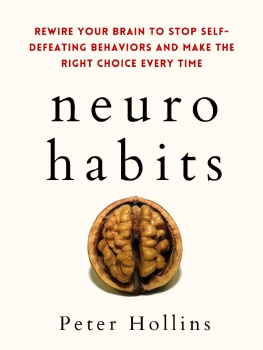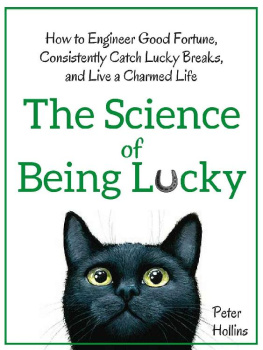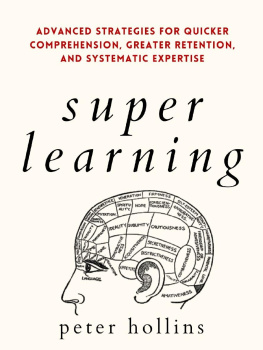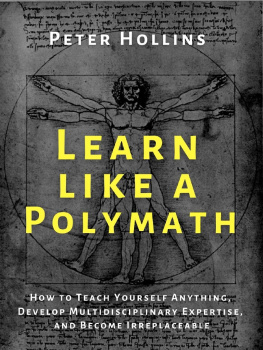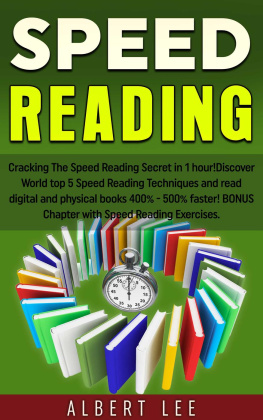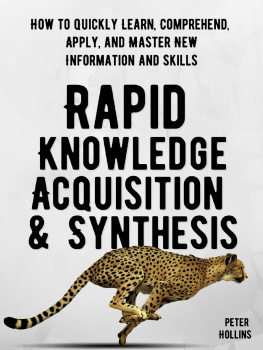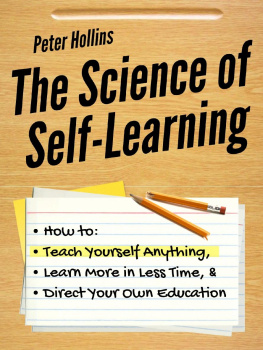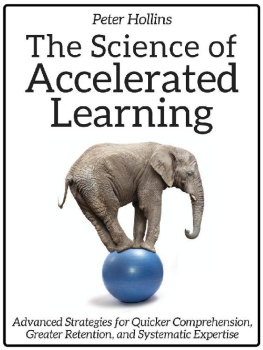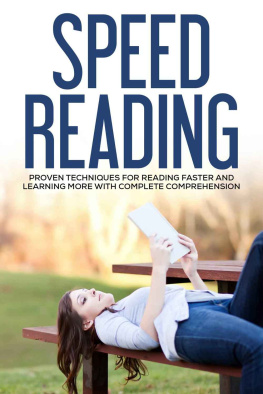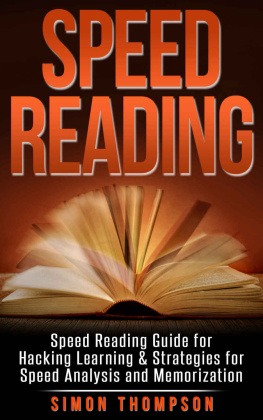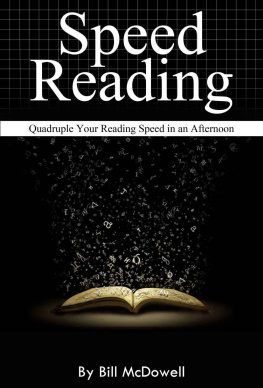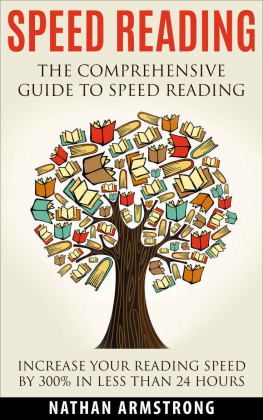Table of Contents
Speed Read Anything:
How to Read a Book a Day with Better Retention Than Ever
By Peter Hollins,
Author and Researcher at petehollins.com

CLICK HERE for your FREE 14-PAGE MINIBOOK: Human Nature Decoded: 9 Surprising Psychology Studies That Will Change the Way You Think. > >
--Subconscious Triggers
-- Emotional Intelligence
-- Influencing and Analyzing People

Table of Contents
The Neurobiology of Reading
Speed Reading Myths
Speed Reading Benefits
The KBG Method
The 4 Ps Method
The THIEVES Framework
Main Ideas and Pivotal Words
Mortimer Adlers 4 Levels
Try the SQ3R
Stop Subvocalizations
Train Your Eyes
Word-Chunking
Strategically Skim
Miscellaneous Strategies to Read Faster
Basic Tips to Improve Comprehension and Retention
Visualization
Ocular Fitness
Reading for Ideas
Retention
Guide
Chapter 1. Yes, its real.
If you can read these words, chances are that you know a thing or two about reading. Having said that, there is more to reading than just seeing words, connecting what they mean together, and interpreting the meaning of sentences. Even though most of us can perform this basic function called reading, we are notoriously inefficient at it. We struggle to finish books because we lose focus and give up halfway through, or we simply dont bother reading more than we absolutely have to.
This is a mistake no matter who you are, because reading is arguably the one activity that can single-handedly make you smarter than you are today. It doesnt just add to your knowledge; research shows that it literally alters the composition of your brain through a process called neuroplasticity. Many of the most successful people in the world, such as Bill Gates, Mark Cuban, Elon Musk, and Warren Buffet, are voracious readers and credit their success in part to the knowledge they have gathered from all the books they have read.
If being smarter and more successful werent enough, reading also makes you a better person by improving your sense of empathy because youre exposed to a multiplicity of different personalities, beliefs, and mindsets. It also reduces stress, and potentially lengthens your lifespan too.
You can enjoy all of these benefits through the simple habit of reading. Though enhancing your knowledge and becoming smarter or more successful is probably the biggest motivator for anyone to read, the important question is this: How exactly do you start reading in order to achieve this goal? In this day and age, few of us have the time to sit down and read books that are hundreds of pages long. Even college students struggle with this, let alone adults with full-time jobs. So, how does one read efficiently?
The answer is to engage in something called speed-reading. Contrary to what the phrase suggests, this doesnt mean you should just cultivate the habit of reading sentences at an extremely high speed. Theres much more to it, and well explore the concept of speed reading in depth throughout the rest of this book. For now, well start by looking at what reading really is from a biological perspective.
The Neurobiology of Reading
As weve briefly discussed, the basic process of reading involves you first detecting words through your eyes, and then mentally interpreting them in the sequence that they appear. Imagine a child who is reading a book for the first time. He sees the words on paper and scans each letter as they appear in individual words and sentences. This part of the process mainly involves your optic nerve and other related bundles.
Once the childs eyes detect the words, he gives some thought to what the words mean together. Here, the middle and back portions of his brain are at work. Two areas in particular are relevant here. These are Brocas area and Wernickes area. Well explore these in greater detail.
Brocas Area
The Brocas area lies in the frontal lobe of the brain hemisphere that is dominant in speech production (usually the left). This part of the brain is mainly linked with speech and language processing. So, if you have a certain thought and want to express it out loud, the Brocas area will help you do that. The significance of this area is that it shows how important subvocalizationi.e., mentally vocalizing what we readcan be when absorbing sentences. Damage to the Brocas area prevents people from using grammatically correct speech, and this was found to also impact their ability to understand things that they read. However, as well see later, subvocalizations prevent us from speed reading and need to be avoided as far as possible. They served an important purpose when we were children and were first learning to read and comprehend basic language. However, theyve now outlived their usefulness.
Wernickes Area
The Wernickes area is the second part of the cerebral cortex which is linked to speech and language. However, while the Brocas area is responsible primarily for producing language when we speak, the Wernickes area is involved in comprehending written and spoken language. Damage to this area of the brain will render a person able to speak fluently, but the sentences will be gibberish because the person has lost the ability to understand the meaning of words.
These two areas are important because when we subvocalize, or repeat words in our head while reading, we perform an extra step of having the Brocas area vocalize what we read. Instead of doing this, you can simply use the Wernickes area to comprehend your text and move on, thus reducing the time taken to process the sentence and increasing your overall reading speed.
Speed Reading Myths
Before we proceed any further and explore what speed reading really entails, its important to dispel some commonplace myths about the activity itself. This will help us keep expectations realistic and clarify what the method is really all about.
Myth 1: Speed Reading Is a Myth
The first myth were going to tackle claims that speed reading in itself is impossible and that you simply cant increase your reading speed significantly without compromising your comprehension of the material youre reading. The fault for this myth becoming popular majorly lies with so-called speed-reading experts themselves. Some of them have claimed that comprehension really doesnt matter while reading, and that sometimes you can simply glance at a page and understand the essence of whats written on it.
However, this is obviously not true. Comprehension is extremely important while reading because if you dont understand the material, then the entire activity becomes useless. You can increase the speed at which you read up to a point before you inevitably start to compromise on comprehension.
Some experts claim that you can read as many as 20,000 or 25,000 words per minute and still understand everything. Yet this isnt true. It is biologically impossible for us to read that fast because our eyes simply cannot scan words at such a high speed. As weve discussed, when you read, you fix your eyes on a certain sentence, take in all the words you see, and formulate the meaning of all the words stitched together before moving on to the next sentence. There is a limit to how fast your eyes can conduct this process.
Some experts have tried to weasel out of this limitation by simply taking in more information at a time. So instead of reading one sentence at a time, you read entire paragraphs before moving on. The problem with this is that again, our eyes are limited in the ways that they can absorb words. They can only take in so many words before needing to move to take in more.


